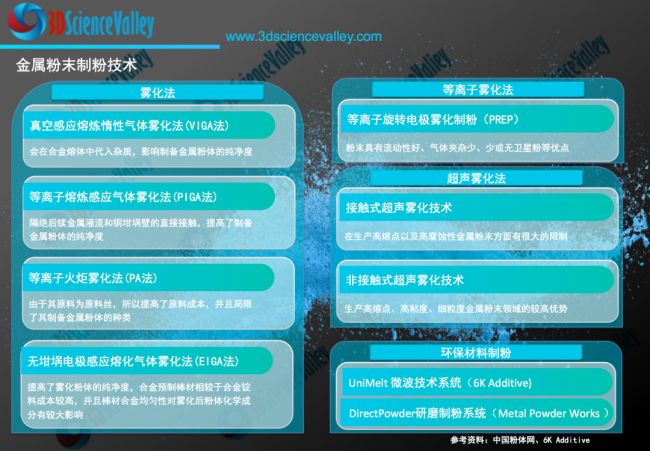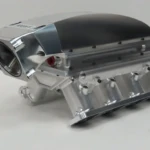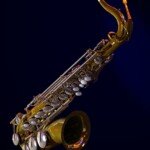Based on market research on the application and development of 3D printing technology in the fields of oral medicine and dental treatment, 3D Science Valley has published four editions of 3D printing white papers and dental industry since 2016. In the process of continuous research and observation of this market, 3D Science Valley clearly felt that the dental application market has gradually developed from focusing on one-dimensional needs such as 3D printing equipment and materials at an early stage to 3D printing technology and oral diagnosis. and treatment. The digital processing chain of dental products is integrated to meet the multi-dimensional needs of improving the efficiency and quality of diagnosis and treatment. In this regard, performance evaluation of 3D printed dental restorative products has become a development strategy to guide digital dental additive manufacturing.

© 3D Science Valley white paper
In the mid-1980s, based on the traditional principle of subtractive molding, the thinking model of layered manufacturing and layer-by-layer superposition molding of additive manufacturing was proposed, including computer-aided design, manufacturing computer-aided, computer numerical control, laser. , precision servo motor and new materials constitute a leap forward in modeling technology and production technology[1]. Due to aesthetic and functional requirements, oral restorations have the characteristics of high personalized demand, different structural shapes and high precision fitting requirements. Therefore, the field of oral restoration is one of the important areas for the research and application of refined additive manufacturing technologies. . At present, there are many relatively mature additive manufacturing technologies and methods, the most typical of which are selective sintering (SLS) additive manufacturing of powder materials, selective solidification (SLA) additive manufacturing of photosensitive materials and additive manufacturing by selective laser fusion. (SLM), selective cladding additive manufacturing (FDM) of filamentous materials[2]. Among them, selective laser melting has the advantages of using a wide range of materials, relatively high dimensional accuracy, high production efficiency and relatively high cost performance. It is currently widely used in oral restoration research and applications. The treatment of oral and removable restorations has been gradually matured. Focused to meet the needs of clinical applications, the performance evaluation was considered from the perspectives of selective laser melting metal powder product overview, metal powder preparation process and performance of powder, casting process and post-processing of oral restorations, fabricated parts and clinical application forms.
Product Overview #1
It is used for selective laser melting of metal materials for oral restorations, including cobalt-chromium alloy, pure titanium and titanium alloy metal powder. According to the “Medical Device Classification Catalog”, the products belong to metal materials and denture products among oral denture manufacturing materials. The management category is category III and the classification code is 17-06-07.
According to the mechanical properties of the product printed parts, metal materials for oral restoration can be divided into 6 types. The application areas of the 6 types of metal materials are as follows:
Type 0: Used for single-tooth fixed restorations that can withstand low stresses, such as small veneers, unilateral inlays, and veneer crowns;
Type 1: Used for single-unit fixed restorations that can withstand low stresses, such as unilateral inlays and veneer crowns with or without veneers;
Type 2: used for single fixed restorations, such as crowns or inlays (no limit on the number of surfaces);
Type 3: used for fixed, multi-unit restorations such as bridges;
Type 4: for restorations with thin components subject to extremely high stresses, such as removable partial dentures, clasps, thin crowns, fixed restorations with long spans or small sections, posts, brackets and superstructure implants;
Type 5: Used for restorations that require high hardness and strength, such as thin removable partial dentures, small section pieces and clasps.
“3D Science Valley White Paper Graphics and Text Analysis
»
#2 Metal Powder Preparation Process and Powder Performance Evaluation
The selective laser melting metal material for additive manufacturing of dental restorations is a spherical metal powder. The base material is processed into metal powder suitable for selective laser melting by different preparation processes. The powder preparation processes mainly include gas atomization method and plasma rotating electrode atomization. ., radio frequency plasma spheroidization method, etc.
“3D Science Valley White Paper Graphics and Text Analysis

»
Since different preparation processing methods and routes have different advantages and disadvantages, which are closely related to risk factors such as metal powder particle size distribution, sphericity, oxide layer thickness, surface roughness and moisture content, it is necessary to clarify the metal preparation process. in a targeted manner. For example, the gas atomization method is one of the most commonly used spherical powder production processes. Since it requires a crucible to melt, impurities are easily introduced. At the same time, defects such as hollow powder and satellite balls are easily produced during the process. atomization process. The nozzle design and atomization process parameters have a great impact on the performance of the powder, and the atomization parameters such as nozzle diameter, melting temperature and atomization pressure should be adjusted to optimize product performance.
The risks of additive manufacturing materials focus on the performance and reuse of additive manufacturing metal powders. Regarding the performance of the metal powder itself, it is necessary to combine the requirements of the additive manufacturing process and the overall requirements of dental restoration, as well as the chemical composition of the powder (elements oxygen, hydrogen and impurities), the morphology and sphericity of the powder. , powder particle size and distribution, flowability, evaluate free density and tapped density. For partially recyclable and reusable metal powders, it is necessary to evaluate the impact of the printing environment (heat, oxygen, humidity, ultraviolet, etc.) on the chemical composition and physical properties of the powder (fluidity powder, particle size, etc.) to promote repeatability. Use with an acceptable benefit/risk ratio.
#3 Casting of oral restorations and evaluation of post-treatment performance
The stable quality of additively manufactured dental restorations depends on the stability of the additive manufacturing process and the post-processing process. Process stability includes equipment stability, print booth environment and key parameters of material molding. For verification and evaluation of the stability of selective laser melting process, laser power, scanning speed, spot diameter, scanning spacing, scanning strategy, powder coating thickness , atmosphere protection, support structure, printing direction and molding chamber temperature must be considered. For additive manufacturing restorations for dental restorations, post-processing can effectively eliminate internal stresses and improve the mechanical properties of the product. For post-processing, the impact of the post-processing process on the safety and effectiveness of the material and the needs of the final product. to be evaluated. Taking heat treatment as an example, it is necessary to check and evaluate the suitability of the heat treatment method, and determine the acceptability criteria of heat treatment parameters and results after heat treatment. Regarding the verification of the heat treatment process, the impact of the process on physical and chemical properties, mechanical properties, etc. of printed parts must be taken into account.
#4 Evaluation of manufactured parts and clinical request forms
(1) Research on the physical and chemical properties of printed parts
The performance of printed parts reflects the corresponding performance of metal powder and printing process and is an important indicator for evaluating the clinical performance of products. According to the clinical processing needs of oral restorations, performance studies and comparisons of the types of restorations processed by the declared products with products of the same type should be conducted to evaluate whether the additive manufacturing metal powder can meet the processing requirements. and preparation of restorations.
Study the physical and chemical properties of printed parts, including chemical composition (changes before and after printing), surface roughness, size, warpage, hardness, tensile properties, flexural properties, inclusions and porosity, density and corrosion resistance, tarnish resistance, microstructure, adhesion, coefficient of linear expansion (if applicable), metal-ceramic system properties – peel resistance/crack initiation ( if applicable), etc. Due to the heterogeneity of additive manufacturing, the impact of different printing directions on performance must be evaluated.
(2) Functional evaluation of clinical application
There are many types of additively manufactured oral restorations used in clinical practice. It is necessary to consider risks such as sample fracture, wear and damage to opposing teeth, and select fatigue, resistance to repeated bending, resistance to deformation and strength. friction, wear, etc. Suitable projects are evaluated. If the product is suitable for making fixed prostheses, friction and wear of the occlusal surface of the crown must be assessed. For multi-unit dental bridges, the fatigue performance of the bridge should be evaluated. To make mobile holders, the clasps must be removed and worn repeatedly. The position force and failure conditions, fatigue performance, and repeated bending resistance of the large connectors were evaluated. Demonstrate that metal powder additive manufacturing and casting processes can meet corresponding clinical needs.
The manufacturing process of traditional dental restorations has problems such as tedious manufacturing process, long manufacturing cycle, manual operation, metal materials prone to deformation during the manufacturing process, difficulty in controlling dimensional accuracy and reduced comfort for the patient. Facing these problems, additive manufacturing technology has the characteristics of short manufacturing process, high customization and near-final shaping, bringing new opportunities and challenges to the manufacturing of dental restorations. . Faced with the clinical usability of additively manufactured dental restorations, we need to identify the main risk points, comprehensively integrate the performance requirements of additively manufactured metal powders, research on printing processes, performance of printed parts and other aspects to build a performance evaluation system for accurate performance evaluation. risk control, which also provides effective ideas. Effective evaluation of new materials and processes provides effective ideas.
References
[1]Yang Zhanyao, Zhao Jingyun. Additive manufacturing and 3D printing technology and applications.[M].Tsinghua University Press.2017.5.
[2] Zhang Xuejun, Tang Siyi Research status and key technologies of 3D printing technology.[J]. Materials Engineering, 2016,44(2):122-128.
Daguang focuses on providing solutions such as precision CNC machining services (3-axis, 4-axis, 5-axis machining), CNC milling, 3D printing and rapid prototyping services.












































